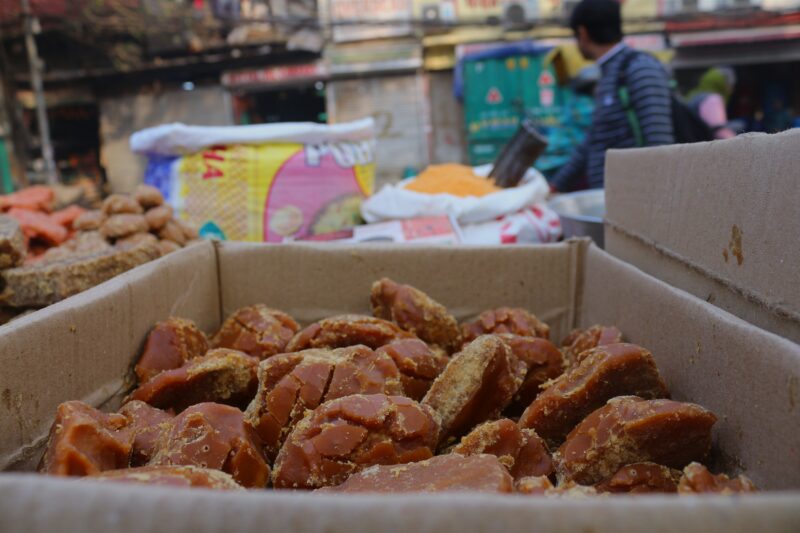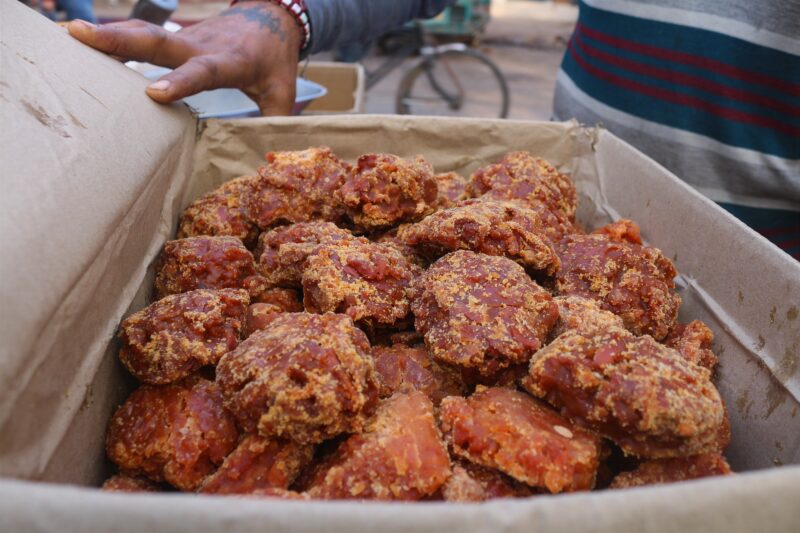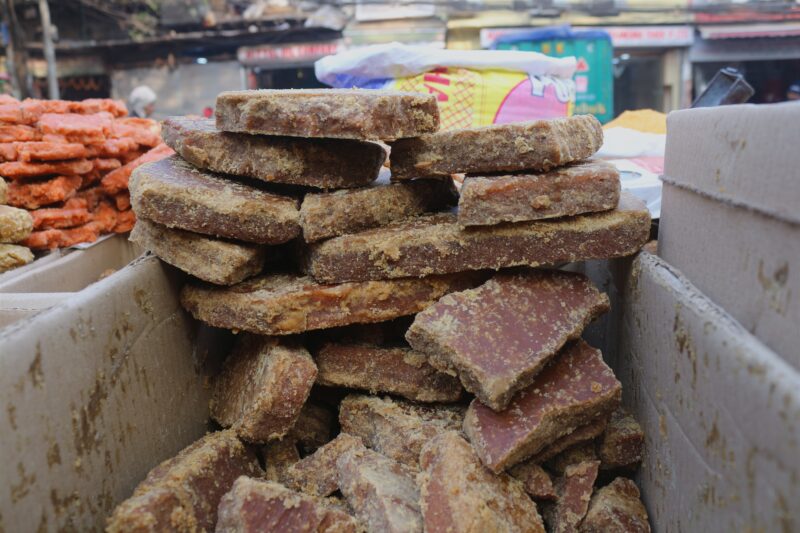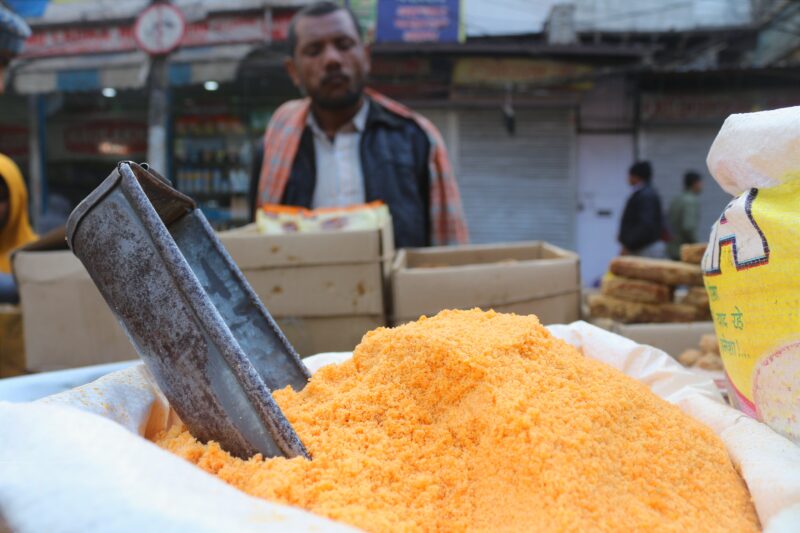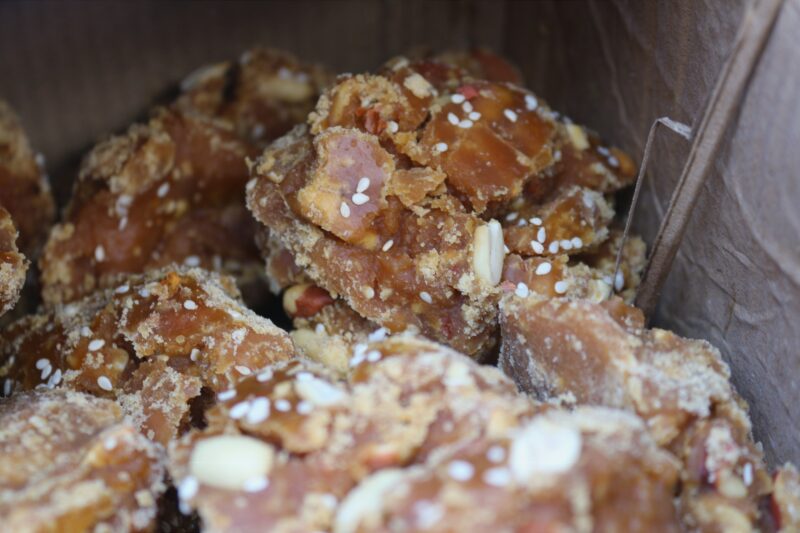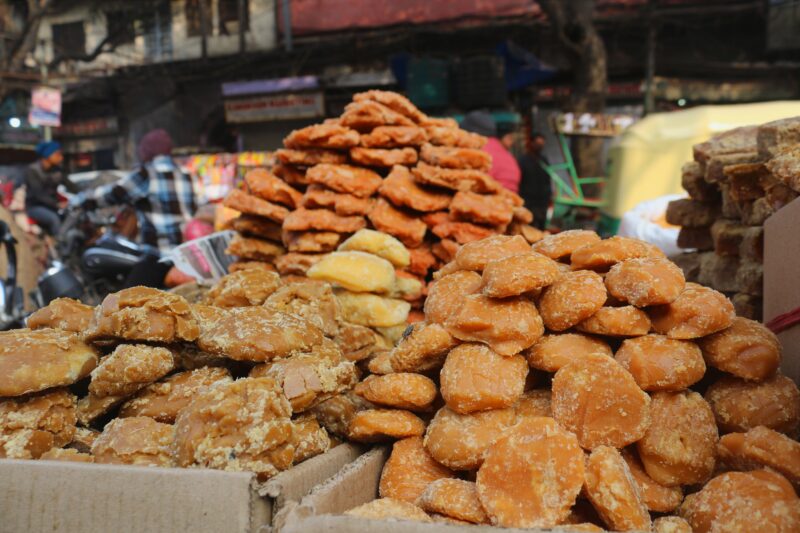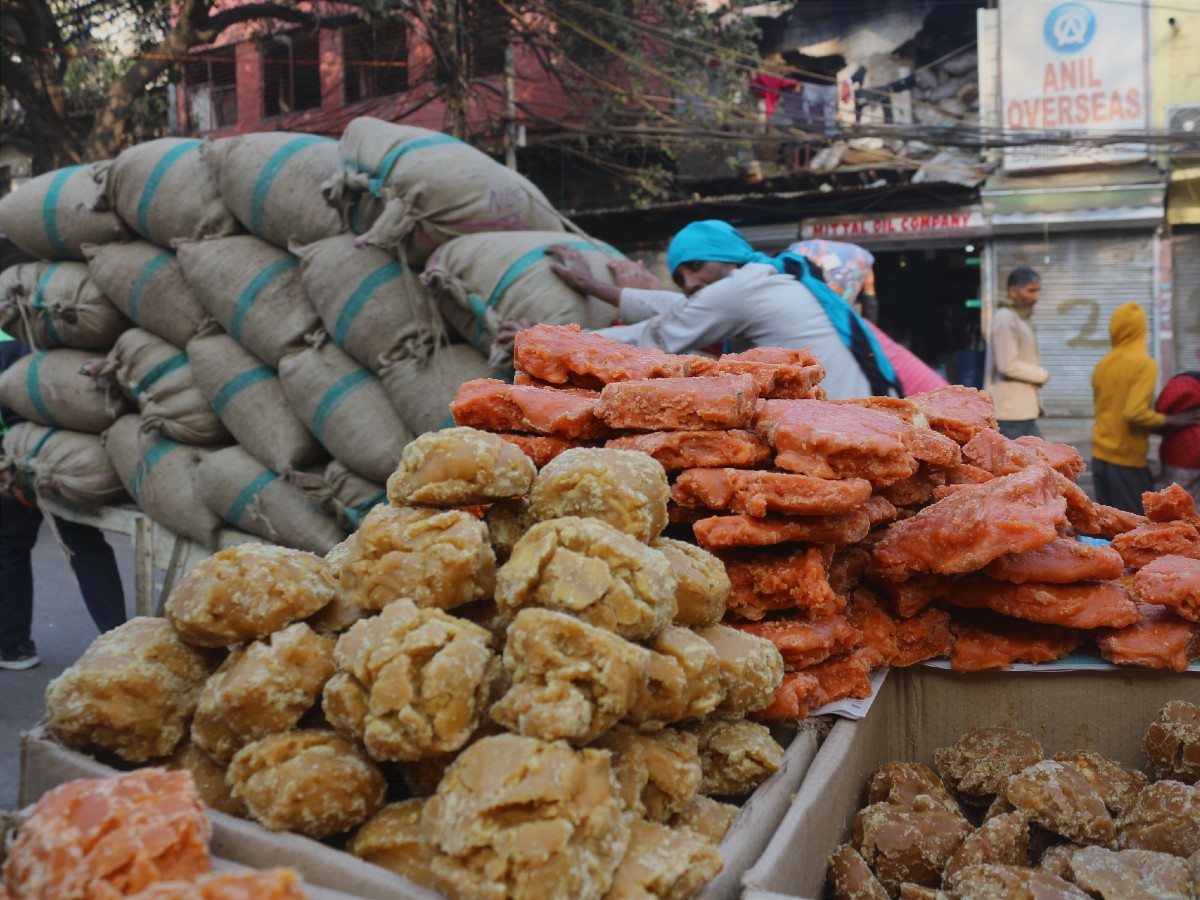The cold wave has hit Delhi and what better way to wish away the chill than to snuggle up in a comforter and nibble on gud (jaggery). And, what if there is a variety of gud to pick from.
Delhi’s one-stop shop for spices, condiments, grains, nuts and almonds is Khaari Baoli. The crowded wholesale market, in which rickshaws and humans jostle for space, also has plenty of variety in gud such as coconut gud, khajoor ka gud, masala gud, dry fruit gud, gaajar ka gud etc.
Manohar Lal, a 35-year-old who hails from Rajasthan, migrated to Delhi 15 years ago. He sells gud on the streets of Khari Baoli.
“We have varieties in gud, which is popular among Delhiites during winters. Gud is winter delicacy, which is often consumed during winters. We trade tons of gud from Uttar Pradesh every winter season,” says Lal.
But the seller of the humble unrefined sugar, which is made from sugarcane or palm, is also feeling the pinch of price rise.
“As compared to last year inflation has risen. I have seven people to look after in my family. I am the lone breadwinner of my family. We are struggling to make ends meet with this business,” he laments.
Tulsi Kumar, who hails from Bihar and is into his sixties, migrated to Delhi in the 90s. He too sells gud in the wholesale market.
He knows a few things about the product and is ready to part with his knowledge.
“Gud is very helpful during winters. It can protect you from cold, sore throat and other infections. As Delhi is reeling under poor quality of air, there are many takers of gud during winters, especially children. It boosts their immune system, because it carries nuts, carrots, ginger, saunf (fennel seeds) and dates,” he adds.
Kumar also has a huge responsibility on his shoulders.
“I have responsibility of nine people on my head. Earlier, we were earning well. When I came to Delhi, I was able to make profit out of it, and was able to save money as well but nowadays inflation has choked us. I remember I used to sell gud for chawanni (one-fourth of a rupee) and was able make profit out of it. But over the years,God knows why, but we are getting affected.”
According to www.webmd.com, one of the top healthcare websites, “Jaggery is an excellent source of iron for a plant product. A single serving may contain nearly 10% of your required iron intake for the day. Iron is critical for supporting healthy blood cells. Getting enough iron in your diet can help you feel less tired and improve muscular function.”
No wonder it is being taken as a healthy snack by everyone who works in the market.
Prakash, who hails from Alwar district of Rajasthan, came to Delhi for a better living. He ended becoming a migrant labourer transferring heavy load from one place to another. He relies on gud to beat the winter chill and keep himself strong.
“We eat it like this only. It helps strengthen our immune system. We carry tons of load every day without break. This gives us strength and relieve us of our difficulties,” adds Prakash as he bites into a block of gud that he has just bought for Rs 20.
Barring khajoor (date) gud, most of the variety in the market is from Uttar Pradesh.
Prices of a variety of Gud
Ginger-Garlic Gud Rs 80 per kg from Ballabgarh, Haryana
Chaapu Gud Rs 60 kg
Patasa Gud Rs 60 kg
Lal Paidi Rs 60 kg
Masala Gud Rs 60 kg
Bindi Patasa Rs 60 kg
Plain Patasa Rs 50 kg
Kala Patasa Rs 50 kg
Dry Fruits Gud Rs 200 kg
Khajoor Gud Rs 300 kg
Carrot Gud Rs 55 kg
Coconut Gud Rs 48 kg
Here is a look at the variety of jaggery
